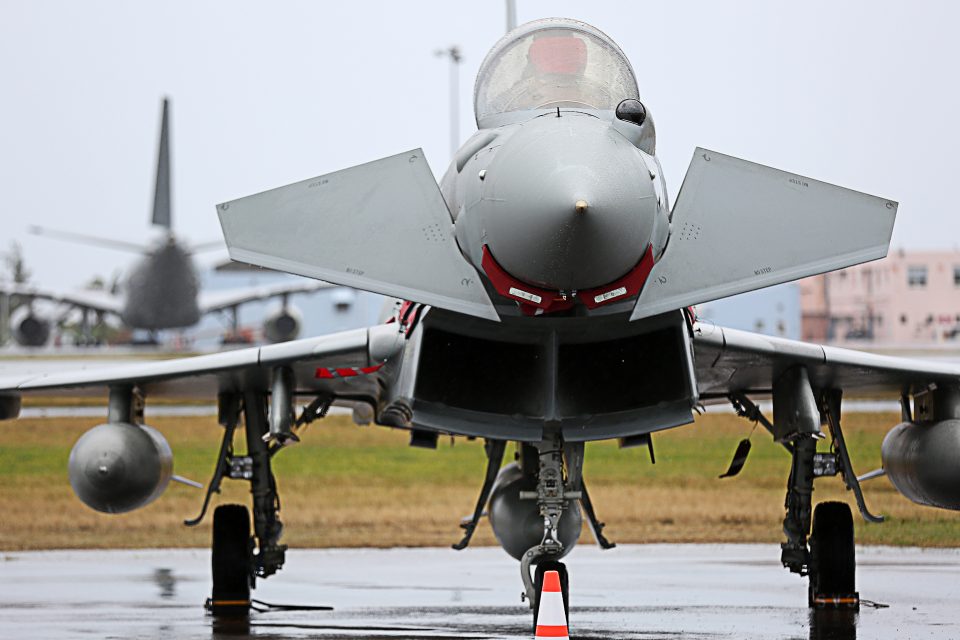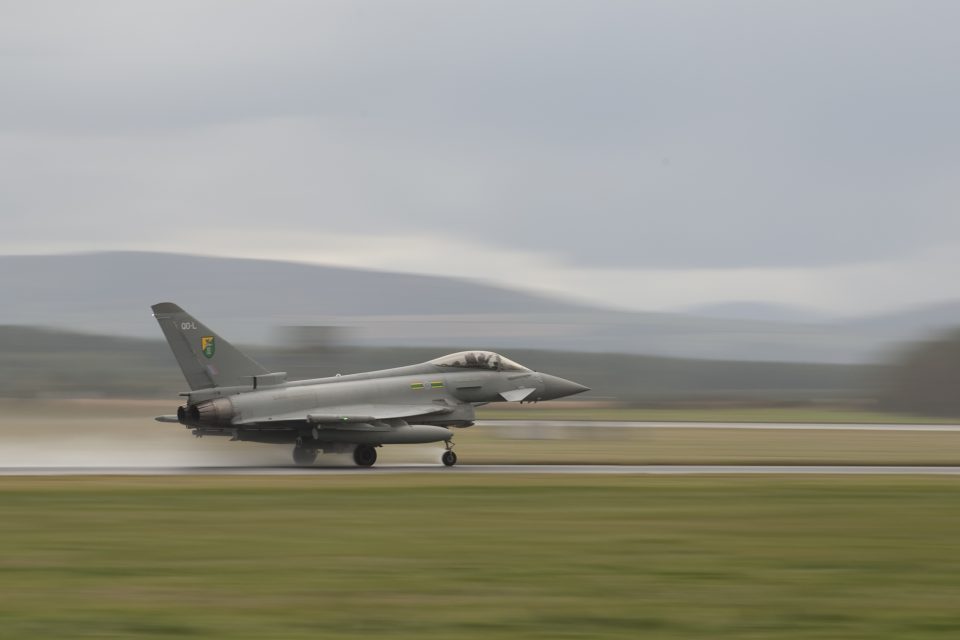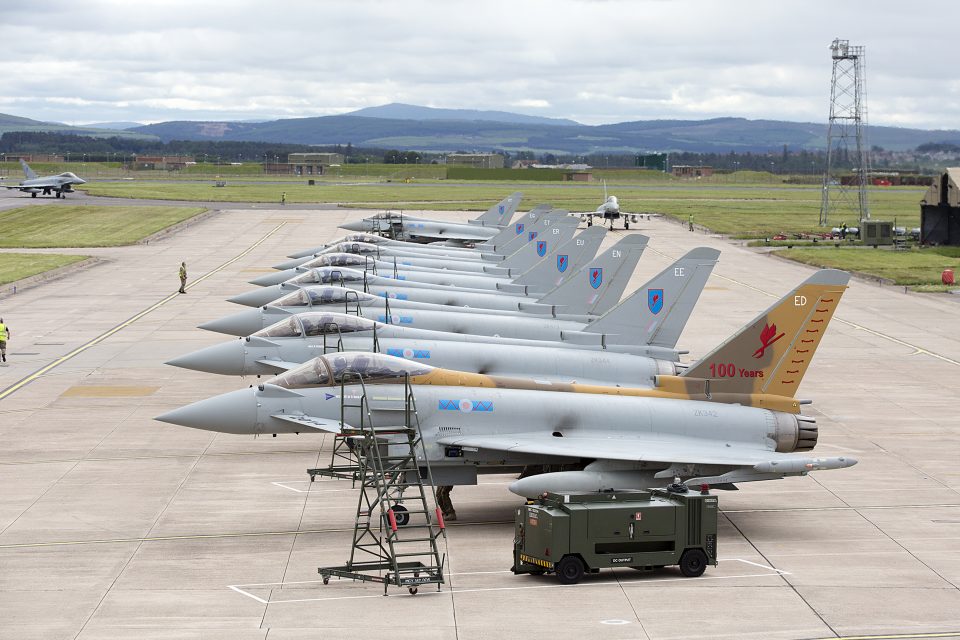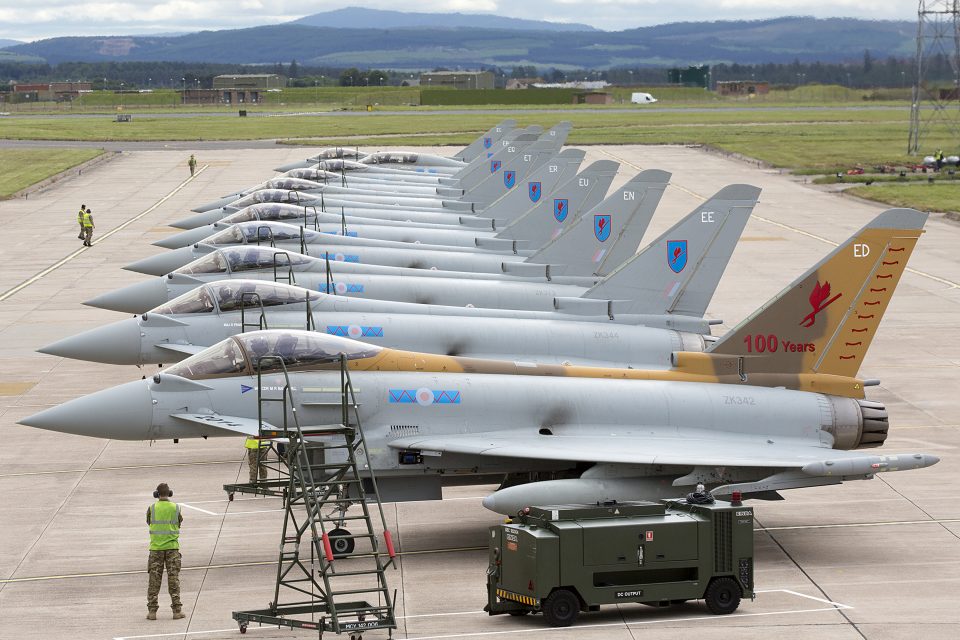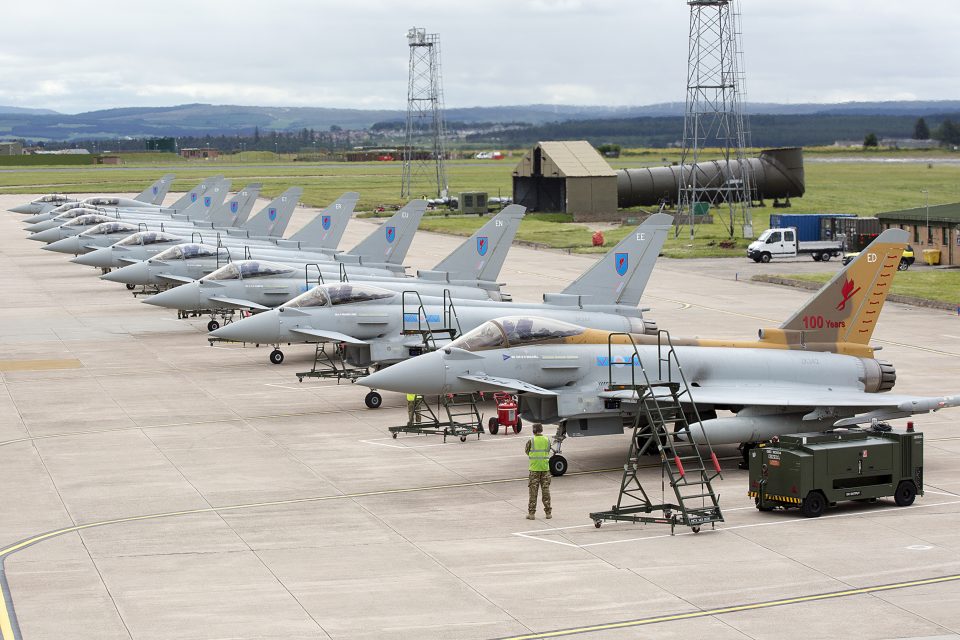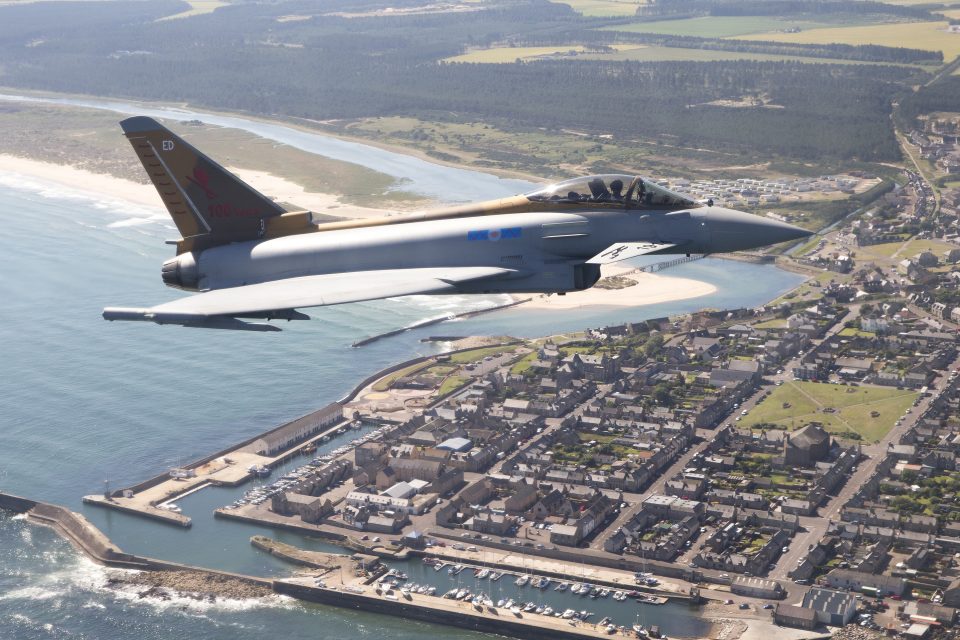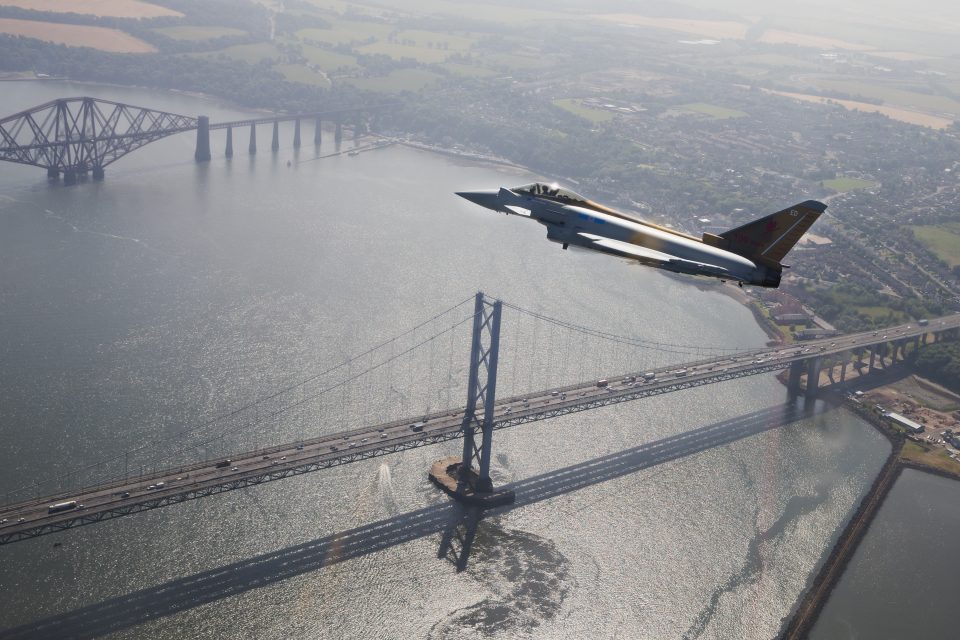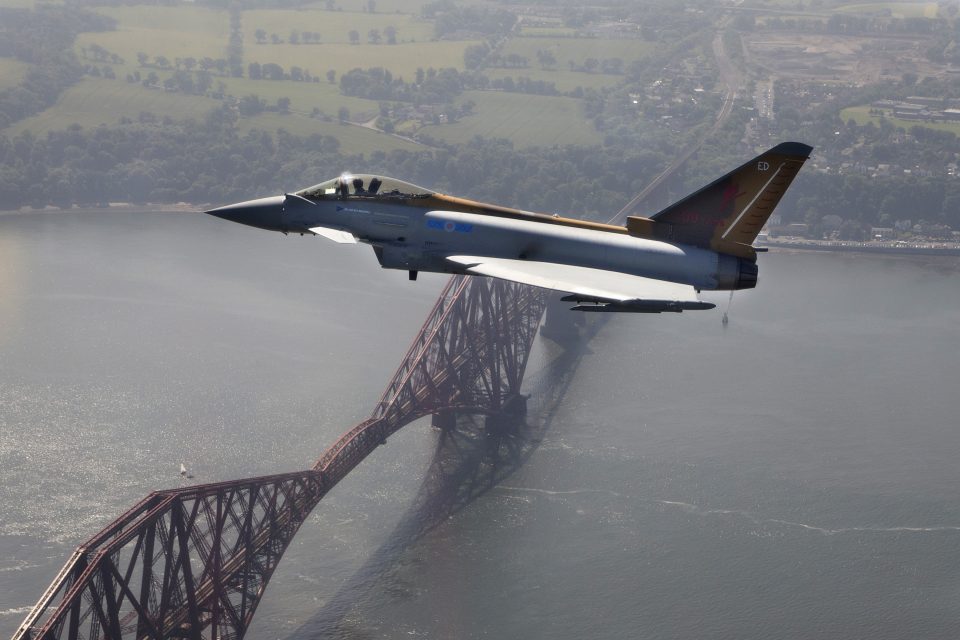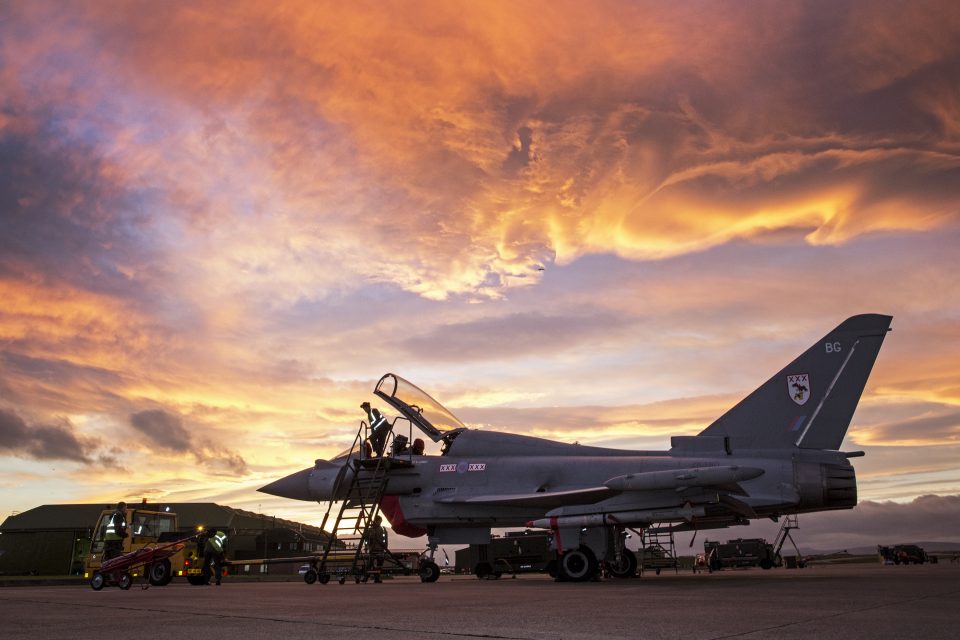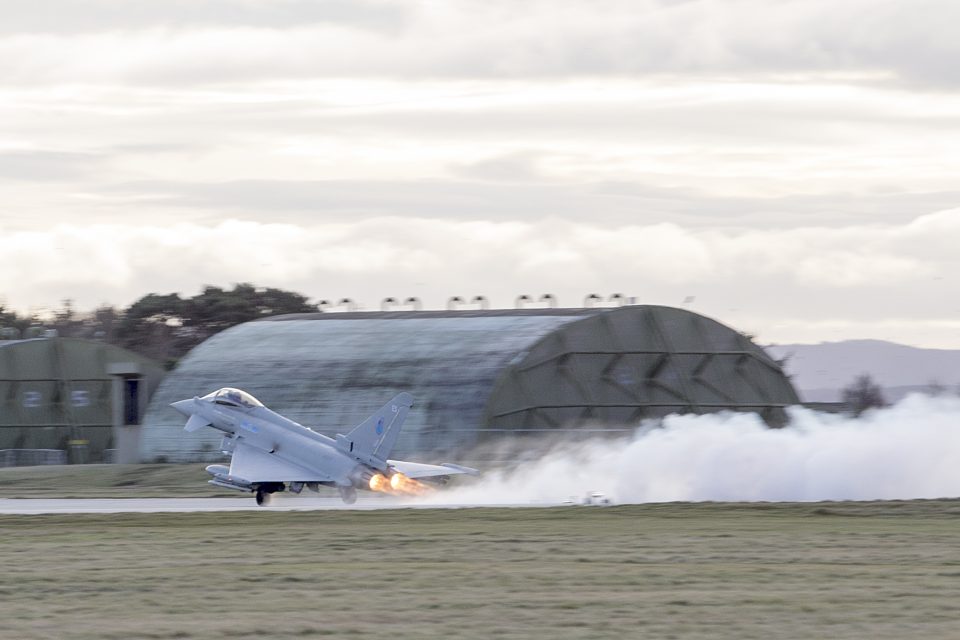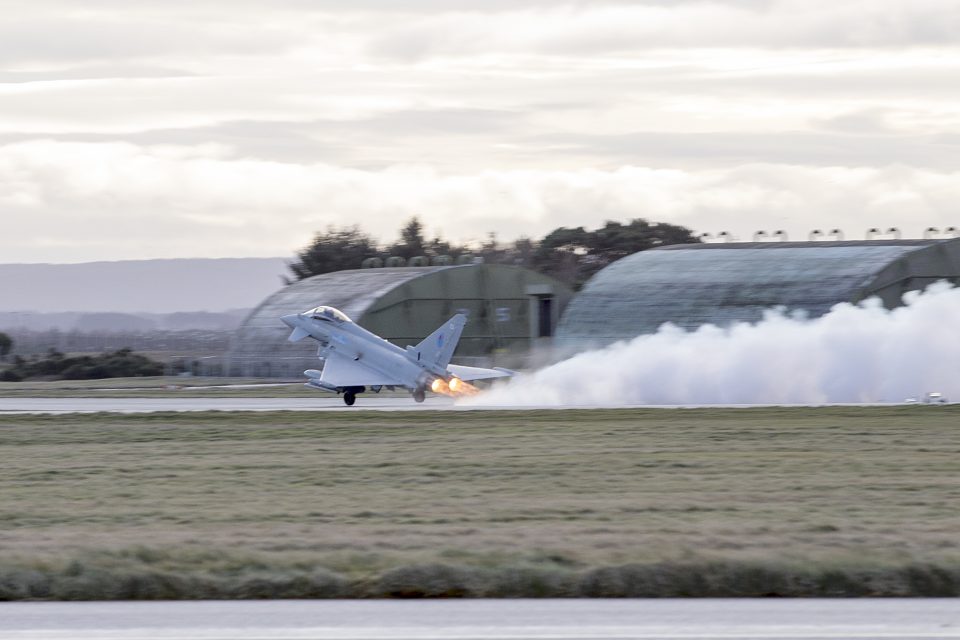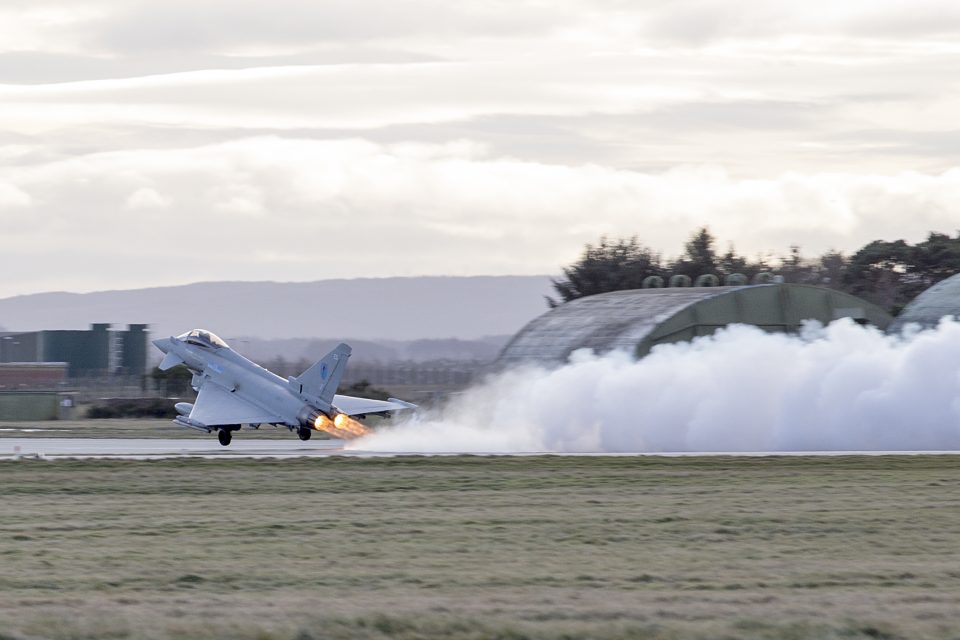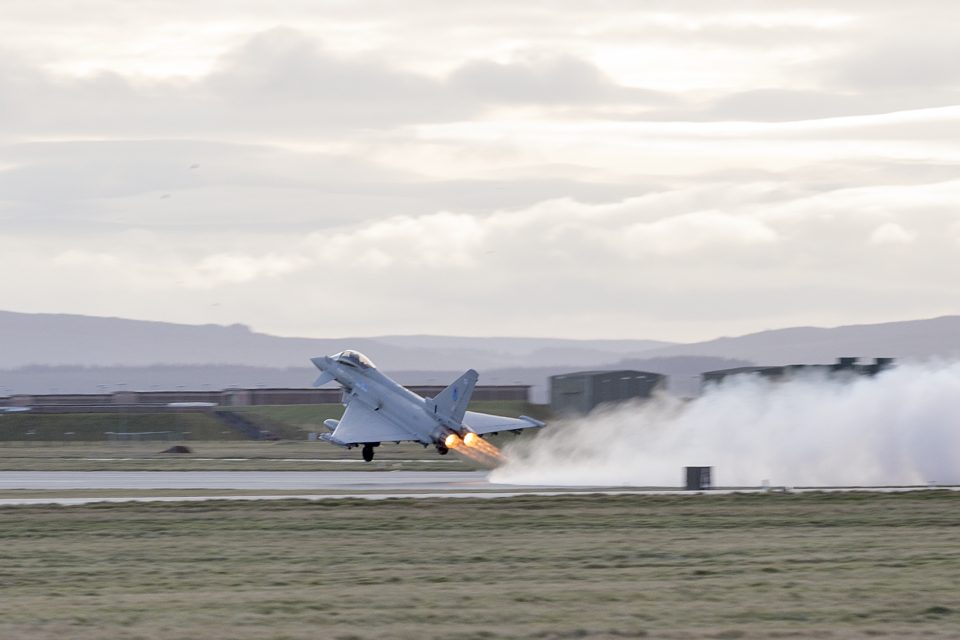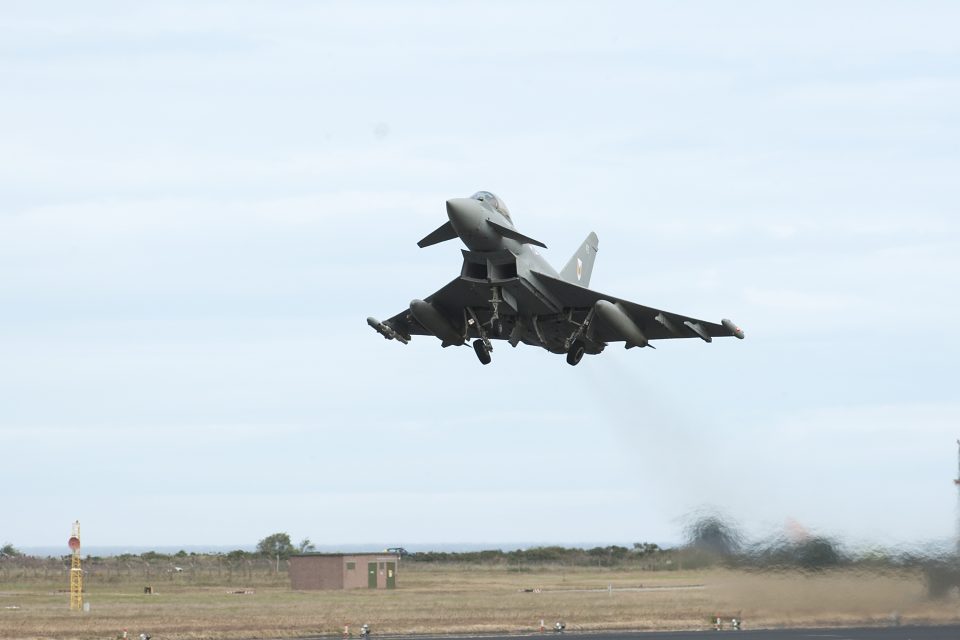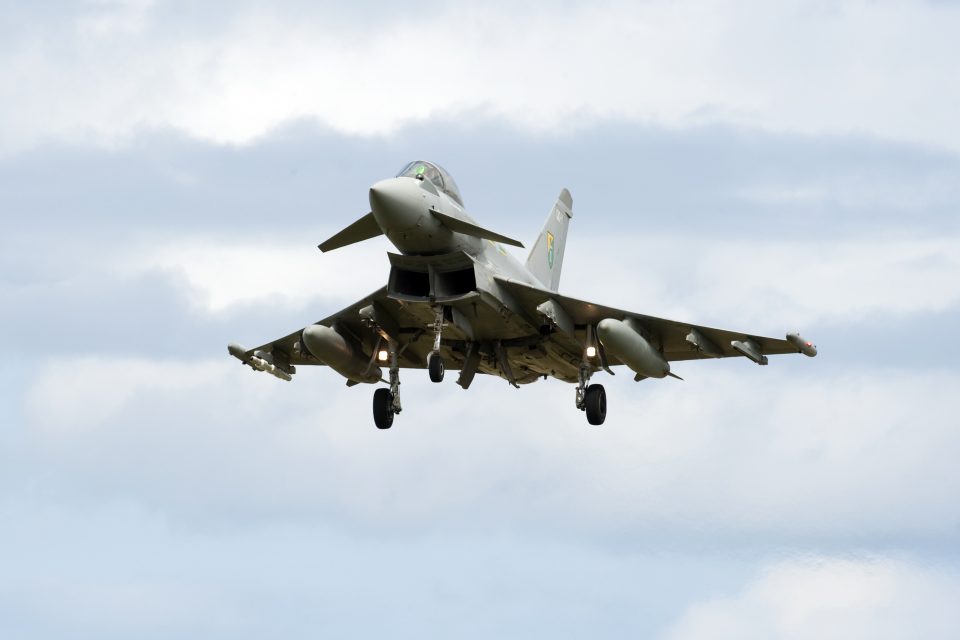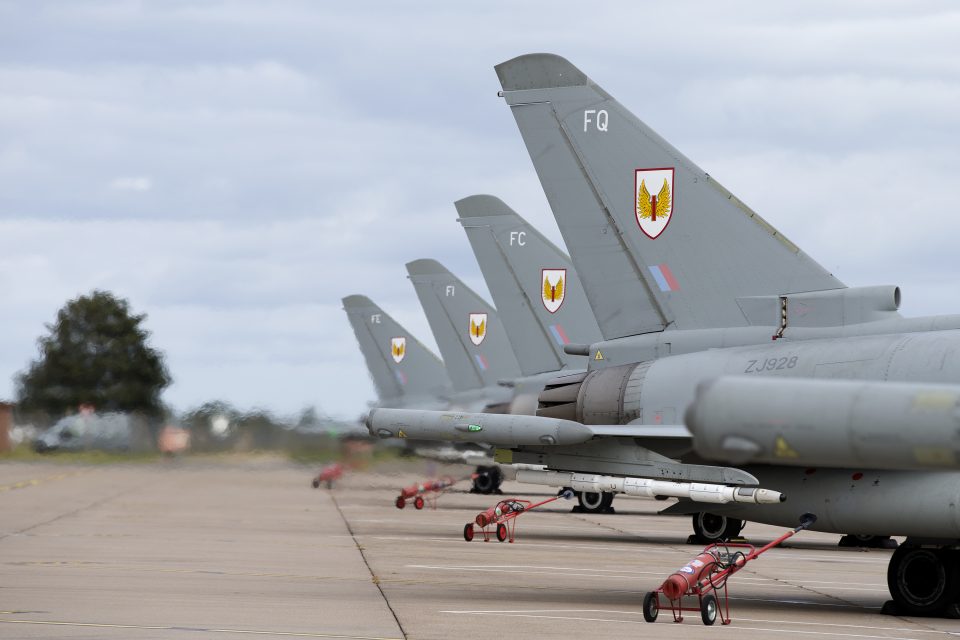2016-11-12 By Robbin Laird
During my visit to RAF Lossiemouth in April 2016, there was a chance to talk with the Officer Commanding Engineering and Logistics Wing at RAF Lossiemouth.
Obviously, the operation of the Typhoon fleet is dependent upon the engineers and logisticians to forge an effective hub for operations, as well as to support deployments abroad.
In this case, Wing Commander Peters, OC Engineering and Logistics Wing not only knows a great deal about this subject, but has been involved in the evolution of Typhoon from his time at MoD Abbey Wood, where one finds the Defence Equipment and Support procurement organization.
It is clear from the discussion with the Wing Commander, that operation SHADER is driving change in the Typhoon fleet and highlighting the challenges of managing the various configurations within that fleet.
Operation SHADER is the operational code name given to the British participation in the ongoing military intervention against the Islamic State of Iraq and the Levant (ISIL), otherwise know as Da’esh.
The operation began in Iraq on 26 September 2014, following a formal request for assistance by the Iraqi government.
Prior to this, the Royal Air Force had been engaged in a humanitarian relief effort over Mount Sinjar, which involved multiple aid airdrops by transport aircraft and the airlifting of displaced refugees.
By 21 October 2014, the intervention had extended onto Syria with the Royal Air Force only mandated to conduct surveillance flights over the country.
On 2 December 2015, the House of Commons approved British airstrikes against ISIL in Syria.
In March 2016, the Ministry of Defence announced that over 1,000 personnel were engaged in theater and that the Royal Air Force had conducted a total of 640 airstrikes, flying over 2,200 sorties, killing almost 1,000 ISIL fighters.
From the engineering and logistics side of the RAF what this has meant is that the right configuration of Typhoons need to be prepared in the UK, sent to the Middle East and supported during operations.
This means Typhoons prepared for air-ground operations and coalition configurable.
With the Typhoon fleet in transition from its classic air superiority role to a multi-mission role, not all Typhoons are prepared to operate in Operation SHADER.
This means that the RAF is working the necessary upgrades and driving change in the fleet to meet combat requirements in the Middle East.
The different configurations of Typhoon have been identified and explained in the following graphic provided by BAE Systems.
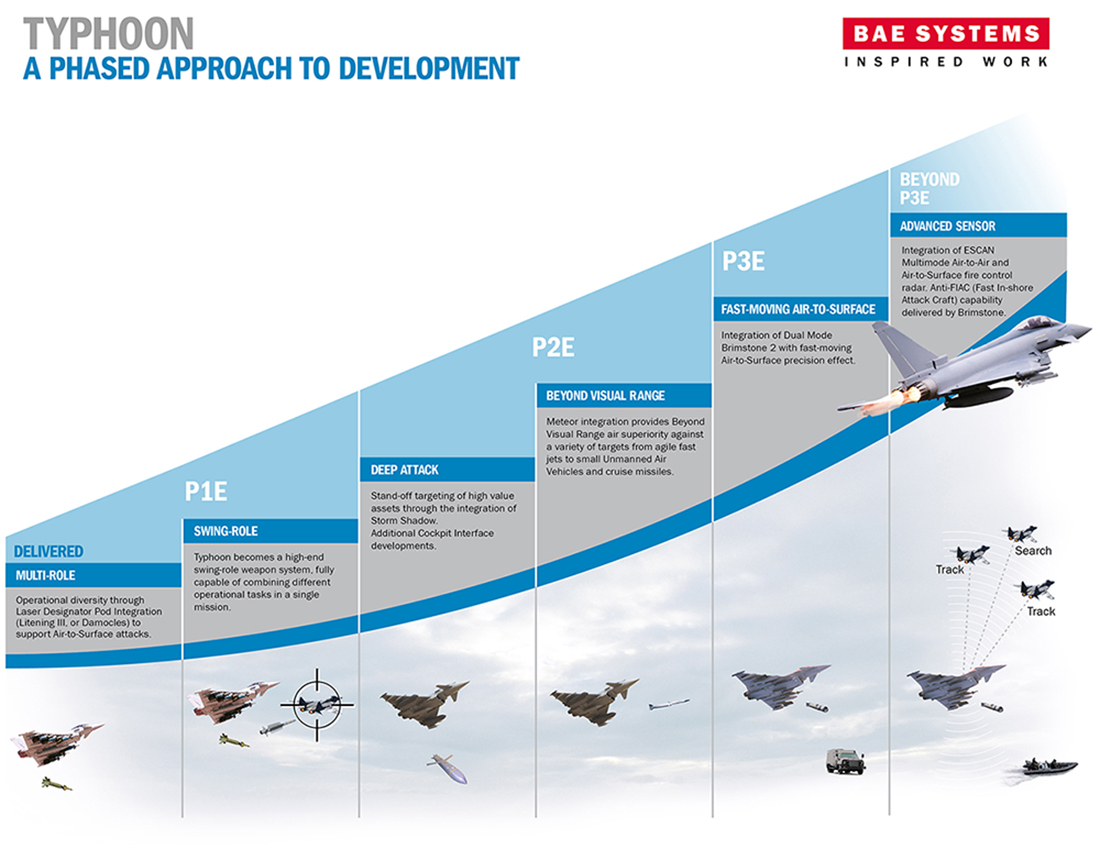
Here it is clear that the P1E aircraft is the baseline which is needed with the planned evolution to adding a new radar, an upgraded cockpit and other modernizations on the way.
In terms of delivering military capability in the near term, it is about delivering the right configuration to the right place at the right time.
This is the challenge being faced by the Typhoon Force Headquarters (the main operating bases such as Lossiemouth effectively react to the tasking of the FHQ).
Wing Commander Peters highlighted that during his time at Abbey Wood, the structure was put in place to make the requisite changes.
Here the Requirements Management staff and the engineering specialists of the RAF and MoD Civil Service operated in close proximity to identify necessary changes and to find ways to get those changes implemented.
“The requirements manager would walk 100 yards across the hall and say: “The Air Command customer wants me to achieve this effect.
“Engineers, what can you do to deliver it?
“During my time at Abbey Wood, we were driving the P1EB modifications on the aircraft for UK needs for the RAF.
“We service modified the aircraft to be able to operate Paveway IVs and we have modified the aircraft to operate Paveway IVs, sometime ahead of the four nation program.”
The variant the Wing Commander discussed is the air-to-ground modified Typhoon, the aircraft they send to Red Flag and send to Operation SHADER.
“P1 EB is a software upgrade, with minor hardware changes.”
According to November 27, 2014 article published on the RAF website:
P1Eb is predominantly an air to ground capability upgrade; it provides enhancements to the Litening III Laser Designator Pod (LDP) and Helmet Equipment Assembly (HEA) (helmet mounted sight) integration, as well as with Paveway IV.
The LDP can now also be used seamlessly with the HEA to visually identify air tracks at long range, as well as identifying, tracking and targeting points on the ground.
According to the Wing Commander:
“P1Eb sets us on the path to getting to the point where Tornado can be retired.
“The Tornado was designed for a 4000 flying hour, life.
We now have aircraft in excess of 6 1/2 thousand flying hours.
“I think the intent is to take some airframes up to 7 1/2, maybe even more, thousand flying hours.
We are wearing them out.”
Question: What is the biggest challenge to shaping the hub to support Typhoon?
“Having the right numbers of people in the right place at the right time.
“Deployments pressure the workforce and it is about not burning those people with the qualification experience necessary to operate the fleet.
“Unless we do things differently, we risk our sustainability of the fleet by not having enough qualified people in the right place at the right time.
“We would then risk not only successful operations but growth into the future.
We want to ensure that we’re in a sustainable medium-long term future for the fleet.”
Question: What is the big fleet management challenge for you?
“We have fleets within fleets.
“We have Typhoons with different Tranches, and different software configurations or PSCs (Production Software Configurations).
“A different PSC can do different things.
“It has a different level of capability.
“We need to deliver a SHADER standard Typhoon to the Middle East operation and that drives a lot of intra-fleet movement.
“It is things like moving Laser Designator pods around within the fleet, to make sure that we have the right configuration at the right place at the right time.
“The key disconnect which we have to manage is between the need to deliver the SHADER standard aircraft, and the presence of variable configuration Typoons in the overall fleet.
“A lot of our support challenges are driven by not having enough aircraft at the same standard.
“If all of our fleet was to the same standard, the challenge would be much easier.
“There is steady progress towards increasing numbers of key variants (specifically the P1E aircraft and standards beyond) but this takes time.
“Of course, this is somewhat of a historic challenge that has always affected armed forces across the world, which have strived to deliver the best military capability within the resource available.”
The slideshow above shows Typhoons operating out of RAF Lossiemouth.
Earlier this year, Alberto Gutierrez, HO Combat Aircraft and Air Services, for Airbus Defence and Space. provided an overview on Eurofighter at the Trade Media Brief 2016 held in Munich, Germany on June 20 and 21, 2016.


